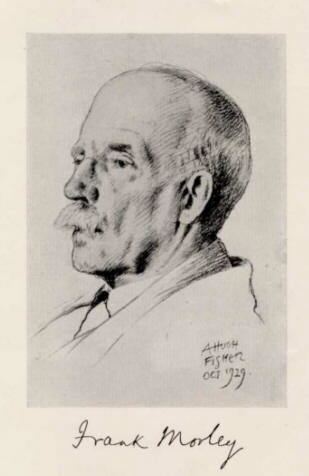Nationality English Books Inversive geometry Fields Mathematics | Role Mathematician Name Frank Morley Ex-spouse Lilian Janet Bird | |
 | ||
Born September 9, 1860Woodbridge, Suffolk, England ( 1860-09-09 ) Institutions Haverford CollegeJohns Hopkins University Doctoral students Harry BatemanLeonard BlumenthalArthur CobleFrancis MurnaghanBoyd Patterson Died October 17, 1937, Balti, Maryland, United States Children Christopher Morley, Felix Morley, Frank Vigor Morley Education King's College, Cambridge, University of Cambridge | ||
Frank Morley (September 9, 1860 – October 17, 1937) was a leading mathematician, known mostly for his teaching and research in the fields of algebra and geometry. Among his mathematical accomplishments was the discovery and proof of the celebrated Morley's trisector theorem in elementary plane geometry. He led 50 Ph.D.'s to their degrees, and was said to be:
Contents

Life
Morley was born in the town of Woodbridge in Suffolk, England. His parents were Elizabeth Muskett and Joseph Roberts Morley, Quakers who ran a china shop. After being educated at Woodbridge School, Morley went on to King's College, Cambridge (B.A., 1884).
In 1887 Morley moved to Pennsylvania. He taught at Haverford College until 1900, when he became chairman of the mathematics department at Johns Hopkins University. His publications include Elementary Treatise on the Theory of Functions (1893), with James Harkness; and Introduction to the Theory of Analytic Functions (1898). He was President of the American Mathematical Society from 1919 to 1920 and was the editor of the American Journal of Mathematics from 1900 to 1921. He was an invited speaker at the International Congress of Mathematicians in 1912 at Cambridge (England), in 1924 at Toronto, and in 1936 at Oslo.
In 1933 he and his son Frank Vigor published the "stimulating volume", Inversive Geometry. The book develops complex numbers as a tool for geometry and function theory. Some non-standard terminology is used such as "base-circle" for unit circle and "turn" for a point on it.
He was a strong chess player and once beat world champion Emanuel Lasker in a game of chess.
He died in Baltimore, Maryland at age 77.
His sons are novelist Christopher Morley, Pulitzer Prize winner Felix Morley, and his son, also mathematician, Frank Vigor Morley.
